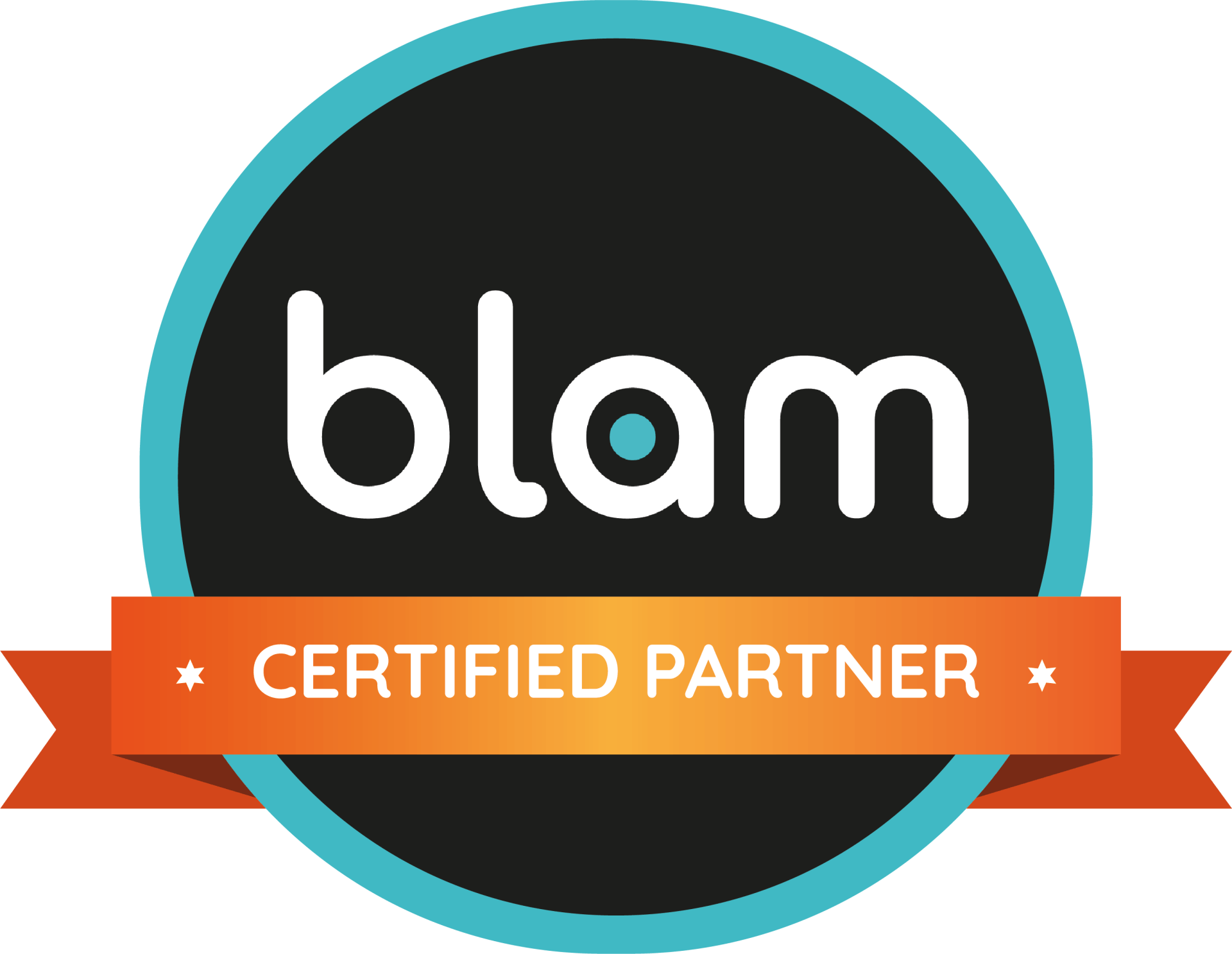Lead Generation for Small Businesses
Proven Strategies for Consistent Growth

Gone are the days when small businesses could simply wait for the phone to ring or rely solely on word-of-mouth to bring in clients. Today’s marketplace is highly competitive, and success depends on creating demand and guiding leads through a thoughtful journey of engagement and nurturing.
For business owners accustomed to large marketing budgets or steady streams of clients, generating leads with limited resources can seem daunting. When calls come in only sporadically, it’s easy to wonder, What am I doing wrong?
One common misconception is that a phone call or inquiry marks the beginning of the lead generation process. However, the journey of a lead often begins long before that moment, with careful marketing and nurturing guiding them towards finally reaching out. Understanding what a lead truly is—and the work that goes into converting it—can transform the way you approach and prioritize lead generation.
Defining Lead Generation and Why It Matters
Lead generation is the process of generating consumer interest with the aim of turning that interest into a sale. Typically, lead generation in online marketing involves collecting a visitor’s contact information, such as their name and email address, through an online form. This allows you to follow up and nurture their interest until they’re ready to make a purchase. For many businesses, lead generation is an essential part of the sales funnel, especially if products or services are complex or high-cost and require more than one interaction to close the sale.
For example, in the B2B sector, it’s common for businesses to collect leads through gated content, such as whitepapers or case studies. These leads are nurtured with further information and relevant offers through channels like email until they reach the decision-making stage. Even in eCommerce, gathering leads through email signups or discount offers allows you to continue marketing to potential customers who may not be ready to buy right away.
By defining lead generation this way, we can see its benefits more clearly:
- For business owners, it creates a steady flow of potential customers, reducing reliance on sporadic sales.
- For sales teams, understanding the journey of a lead highlights the importance of marketing efforts and nurturing that happen before leads are sales-ready.
- For customers, lead nurturing provides helpful, timely information that fosters trust, making them feel valued and informed in their decision-making process.
Did you know?
Only 2% of sales occur on the first contact with a potential customer, highlighting the need for nurturing efforts throughout the lead’s journey (HubSpot).
Simplify Your Lead Management Process
Learn how Vitalix CRM can help you nurture leads effectively and boost conversions.
How Lead Generation Works
Successful lead generation involves two primary steps: attracting visitors to your site and convincing them to share their contact information.
The first step is to bring prospective customers to your website. There are various methods to achieve this, depending on your goals, budget, and the platforms most relevant to your target audience. These include:
- Search Engine Marketing (SEM): SEM is a form of online advertising where businesses pay search engines like Google to display ads in search results. Since search engines are among the top ways people navigate the web, SEM can be a major source of traffic.
- Search Engine Optimization (SEO): Rather than paying for ads, SEO involves optimizing your site’s content so it appears higher in organic (unpaid) search results. By focusing on keywords relevant to your business, you can attract visitors actively searching for your products or services.
- Social Media: Platforms like Facebook, LinkedIn, and Instagram are significant sources of traffic and engagement. Businesses can leverage these platforms by posting valuable content or running ads to draw users to their site.
- Display Ads: Display ads, including banners, videos, and pop-ups on relevant websites, are often purchased on a pay-per-click (PPC) basis, driving traffic directly to your landing pages.
- Offline Events: Networking at industry events, meetups, and conferences can drive leads to your website. Informing potential customers about your brand offline can generate interest and lead to online visits.
Once visitors are on your website, the next step is converting them into leads through a web form. Typically, this is achieved by offering something of value in exchange for their contact information. This “lead magnet” could be an eBook, checklist, exclusive content, or webinar access—something valuable enough to make them willing to share their details.
Key Lead Generation Tactics
Lead generation requires a strategic mix of incentives and well-designed landing pages that guide visitors to take action. Here are a few effective tactics:
- Content Marketing: High-quality content is one of the most popular and effective lead magnets. A business might offer an in-depth whitepaper, case study, infographic, or eBook in exchange for a visitor’s contact information. For example, an accounting firm might offer a free tax preparation guide, attracting leads interested in financial expertise.
- Webinars: Webinars are live sessions that allow visitors to learn about a topic and ask questions. They are interactive and require time commitment, making them highly effective for capturing leads interested in learning more. For instance, a software company might host a webinar on optimizing business operations, attracting business owners who are also potential leads.
- Landing Pages: A well-optimized landing page showcases a product or service and often includes a form for visitors to submit their information. A landing page should focus on solving a problem or meeting a need to entice visitors to act. For example, a health clinic might create a landing page for a free health consultation, providing visitors with a compelling reason to leave their details.
After capturing a lead, the next step is to nurture it. This involves using tools like email marketing to follow up with personalized content, offers, or updates. If the lead shows a high level of interest, it becomes a Marketing Qualified Lead (MQL), meaning they’re ready for closer attention, often from the sales team. MQLs receive targeted campaigns that move them further down the funnel until they are ready for a sales call or product demo.
How to Improve Your Lead Generation
Aside from driving traffic to your site, there are several ways to enhance your lead generation process:
- Optimize Content and Incentives: Since content is often what attracts leads, experiment with different content types and lead magnets to determine what resonates most with your audience. Knowing your buyer personas can help you create content that appeals specifically to your target audience’s needs and challenges.
- Refine Lead Forms: The length of your lead form can impact your conversion rates. While it may seem beneficial to collect detailed information, too many fields can reduce form submissions. Consider limiting your form to essential information, like name and email, to increase conversion rates.
- Enhance User Experience: A distraction-free, easy-to-navigate site helps users focus on your message. Clear calls-to-action (CTAs) that guide visitors toward completing a form are essential. Use an analytics tool to monitor user behavior and identify areas where potential leads may be dropping off.
- Test and Measure with A/B Testing: A/B testing is a method used to compare two different versions of a webpage, lead magnet, email, or advertisement to determine which performs better in achieving a specific goal, such as increasing conversions, clicks, or engagement. By testing variations, you can make data-driven decisions and refine your approach to maximize lead generation. Platforms like Optimizely make it easy to conduct A/B tests and measure results.
Example: A/B testing might reveal that a shorter form performs better on a specific landing page, or that a CTA button with a contrasting color increases clicks. Such insights enable you to make small adjustments that yield significant improvements in conversion.
Did you know:
One famous example is HubSpot’s A/B test comparing a green button with a red button for a call-to-action. They found that the red button outperformed the green button by 21%, illustrating how even simple changes can drive noticeable improvements. Yes, it really can come down to the color of a button! Small design elements, such as the color of a button, can have a surprisingly big impact on user behavior, especially in digital marketing. Although it might seem trivial, factors like color, placement, size, and wording of a call-to-action button influence how users interact with your content.
Optimize Your Lead Generation Funnel Today!
Sign up for a one-on-one marketing strategy session to identify opportunities and refine your approach.
Measuring and Adapting Your Lead Generation Strategy
Lead generation is not a one-time activity but an ongoing process that benefits from constant refinement. Regularly tracking key performance indicators (KPIs) such as conversion rates, lead quality, and cost per lead helps you understand which channels are performing best.
- Example: If social media is driving the most conversions, you might consider reallocating resources toward content and advertising on those platforms. Conversely, if a paid campaign underperforms, you may want to revisit your targeting or messaging.
Through regular analysis, you can adapt your strategies to focus on the tactics that deliver the best results and gradually improve your approach to lead generation.
Conclusion: Building a Sustainable Lead Generation Strategy
In today’s market, lead generation requires a proactive approach that carefully nurtures relationships and builds trust from the first interaction. By employing a mix of strategies—from content marketing to A/B testing—you can create a consistent lead generation system that brings in quality leads, even with a limited budget.
Remember, lead generation is a journey rather than a quick fix. Start with the tactics that align best with your business goals, track your results, and refine your strategy over time. With dedication and the right approach, you can develop a sustainable lead generation system that supports long-term growth and a loyal customer base.
FAQ: Lead Generation for Small Businesses
1. Why is lead generation important for my small business?
- Lead generation creates a steady flow of potential customers, helping your business grow sustainably. Rather than waiting for sporadic calls or relying solely on word-of-mouth, lead generation allows you to proactively reach and nurture potential clients, creating a consistent customer pipeline.
2. How do I know if someone is a “real” lead?
- A real lead is someone who has shown genuine interest in your business by engaging in some way, like downloading a guide, signing up for your newsletter, or interacting with your social media content. Leads often require nurturing and engagement to move them closer to a purchase decision, so the initial contact is just the beginning of the relationship.
3. Is lead generation expensive?
- Not necessarily. Many effective lead generation strategies, such as content marketing, social media, and email newsletters, can be done on a budget. Additionally, starting with DIY options and gradually investing in targeted ads or CRM tools like Vitalix CRM can help you generate leads affordably while learning what works best for your business.
4. What are some cost-effective lead generation strategies?
- Cost-effective lead generation strategies include:
- Content Marketing: Sharing valuable blog posts, guides, or videos that attract potential leads.
- Social Media Marketing: Engaging with followers and directing them to lead magnets.
- Referral Programs: Incentivizing existing customers to refer friends or colleagues.
- Email Marketing: Sending regular newsletters to keep leads engaged.
5. How does a CRM help with lead generation?
- A CRM (Customer Relationship Management) tool stores and organizes all lead data in one place, making it easier to track interactions, segment leads based on interest, and automate follow-ups. A CRM like Vitalix CRM can streamline the process, ensuring no leads fall through the cracks and that each lead receives timely, personalized engagement.
6. How often should I measure my lead generation efforts?
- It’s a good idea to review your lead generation metrics monthly. Tracking metrics like conversion rates, lead sources, and cost per lead allows you to identify which strategies are working best and make adjustments as needed. Regular analysis ensures your budget is spent wisely and your efforts are focused on high-impact activities.
7. What’s the difference between inbound and outbound lead generation?
- Inbound lead generation involves attracting leads by offering valuable content or resources, encouraging them to engage with your brand on their own terms (e.g., through blog posts, social media, or SEO). Outbound lead generation involves reaching out directly to potential customers, often through advertising or cold outreach, to bring them into the sales pipeline.
8. Can I generate leads without a website?
- While having a website is highly beneficial, you can still generate leads through other channels like social media, local business directories, or email marketing. However, a website helps establish credibility, provides valuable content, and can host lead magnets to capture contact information, making it an essential tool for most businesses.
9. How long does it take to see results from lead generation?
- Lead generation is an ongoing process, and results can vary based on strategy and industry. Content marketing, social media, and email campaigns often build momentum over time, while paid advertising can produce quicker results. On average, it may take a few months to see consistent lead flow from organic efforts, whereas PPC ads or targeted campaigns can bring in leads almost immediately.
10. What are lead magnets, and why should I use them?
- Lead magnets are valuable resources, like eBooks, checklists, or guides, that you offer in exchange for a visitor’s contact information. They’re an effective way to capture leads who are interested in what you offer, allowing you to follow up with them and nurture the relationship. Lead magnets create a win-win situation: potential customers gain useful information, and you obtain their contact information to continue engaging with them.
Whether you’re handling your own lead generation or using tools like Vitalix CRM, remember that lead generation is a journey, not a quick fix. Start with the strategies that resonate most with your business, track your results, and refine your approach over time. With dedication, these efforts will lay the foundation for lasting growth and a loyal customer base.
Empower Your Business with Consistent Leads
Learn how our tailored marketing strategies can work for your business.









